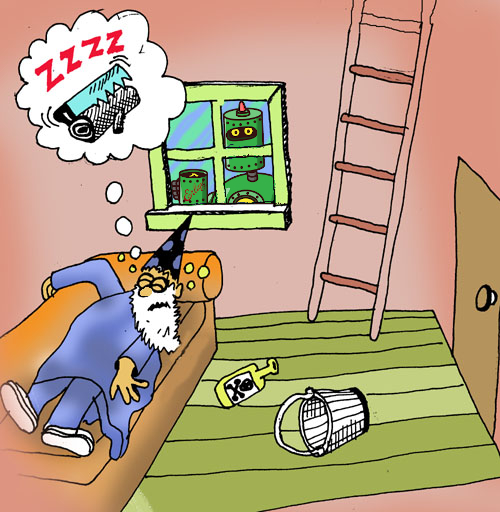Location, Location, Location
The first command we'd want to have is a command that tells us about the location we're standing in. What do we need to do? Perhaps if we start with describing all places, we can work towards one place. This may sound a little backwards, but Lisp is very good with lists (it's also good with "backwards"), so let's try it!
We can get there in stages by playing with our new game state and record functions. Getting the player location is super-easy:
lfe> (state-player-location state)
living-room
What about a place's description? Well, that's buried a few more levels deep in our game state record. We'll take a look, but first we can refresh our memories about the fields defined in the records:
lfe> (fields-state)
(objects places player-location goals)
lfe> (fields-object)
(name location)
lfe> (fields-place)
(name description exits)
Let's imagine our location is in living-room (which, indeed, it is...).

To get the description field, we'll need a place record; to get the place, we'll need a specific element of the places field of the state record.
Let's do it!
lfe> (place-description
(car
(state-places state)))
"You are in the living-room of a wizard's house. There is a wizard snoring loudly on the couch."
lfe>
Hey, that wasn't so bad! And we got to use our old friend car :-) But how do we turn this into a function? Let's start with seeing if we can get a description for all places:
lfe> (lists:map
(lambda (x)
(place-description x))
(state-places state))
("You are in the living-room of a wizard's house. There is a wizard snoring loudly on the couch."
"You are in a beautiful garden. There is a well in front of you."
"You are in the attic of the wizard's house. There is a giant welding torch in the corner."
"Everything is misty and vague. You seem to be in the netherworld.\nThere are no exits.\nYou could be here for a long time.")
Wow! How did we do that? Well, there are a few new things here. This function uses a common functional programming technique: Higher Order Functions. This means that the map function in the Erlang standard library's lists module is taking another function as an argument so that it can be called for each item in the list that is passed (in this case, the list that is passed is the output of the call to (state-places ...)).
But what function? Good question! This is an example of the Function with No Name, or as it is better known, an anonymous function. Anonymous functions are not created with defun like named functions are. Instead, they are created by using the lambda form. Anonymous functions are useful for doing a task that you don't want to bother writing a function for (or to wrap something that's not a function, but you want to treat like a function ...).